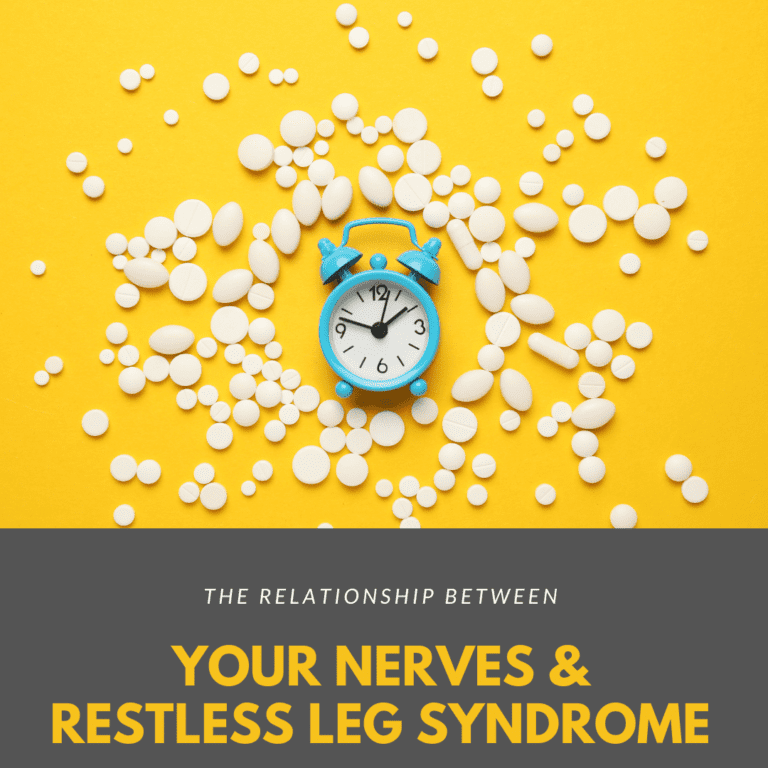Restless leg syndrome (RLS) robs quality sleep from 1 out of every 10 adults. Also known as Willis Ekbom disease, RLS is characterized by itching, prickling, pulling, crawling, or other uncomfortable sensations in the legs that result in an overwhelming urge to move one’s legs. These sensations are generally relieved with walking, stretching, or shaking the legs, and get worse during periods of inactivity. Because of this, RLS tends to be at its worst while sleeping or resting.
RLS symptoms are managed with lifestyle changes and drug treatments. It is often recommended to exercise, use massage, and take hot baths in order to stimulate and stretch the legs before bedtime. Since RLS is tied into your sleeping habits, it is also recommended to practice good sleep hygiene in order to promote high-quality sleep. Finally, avoiding substances like alcohol, caffeine, and nicotine have also been found to decrease symptoms associated with RLS.
Still, not everyone finds relief from lifestyle changes alone. In these cases, prescription medications can be used to relieve symptoms. However, medications used to treat RLS are not made with RLS in mind. Instead they are used primarily to treat other medical conditions and secondarily to treat RLS. Even though these treatments still have the potential to relieve symptoms, there is still a need for medication designed specifically to treat RLS.

The main reason why such a medication does not already exist is due to the fact that the causes of RLS are still not fully understood. In some cases, RLS can be a symptom of other medical conditions such as iron deficiency, kidney disease, neuropathy, multiple sclerosis, or Parkinson’s disease. In other cases, the exact cause of RLS is unknown.
However, a recent study has made a discovery that could change the future of RLS treatment. The study evaluated 72 individuals (34 individuals with primary RLS & 38 healthy individuals) who had an excitability study performed on motor neurons in their medial nerve. The medial nerve is the main nerve in the forearm responsible for moving the hand. The results found that the nerve cells in legs are more excitable in people with RLS than those without it.
Basically, this means that there is an increase of nerve cell activity within the leg during a RLS attack, which suggests that RLS could be caused by increased nerve activity. Therefore, this suggests a need for drugs that can relax the nerves to bring nerve signals back to their normal level. In doing so, it is believed that RLS may be able to be treated, managed, and even prevented.
At this current moment, it is not believed that this new discovery will yield a new drug specifically for RLS. In some cases, the data simply reinforces the use of current medications, while also eliminating others that may not be as effective. However, this study helped to better understand why RLS happens, which can help researchers moving forward with finding the ideal treatment for RLS.

Dr. Kashouty, a diplomate of the American Board of Psychiatry and Neurology (ABPN), practices general neurology with fellowship trained specialization in clinical neurophysiology. Dr. Kashouty finds the form and function of the nerves and muscles the most interesting part of neurology, which is what led him to specialize in neurophysiology with more emphasis on neuromuscular conditions. He treats all neurological diseases, but his main focus is to treat and manage headaches, movement disorders and neuromuscular diseases.




